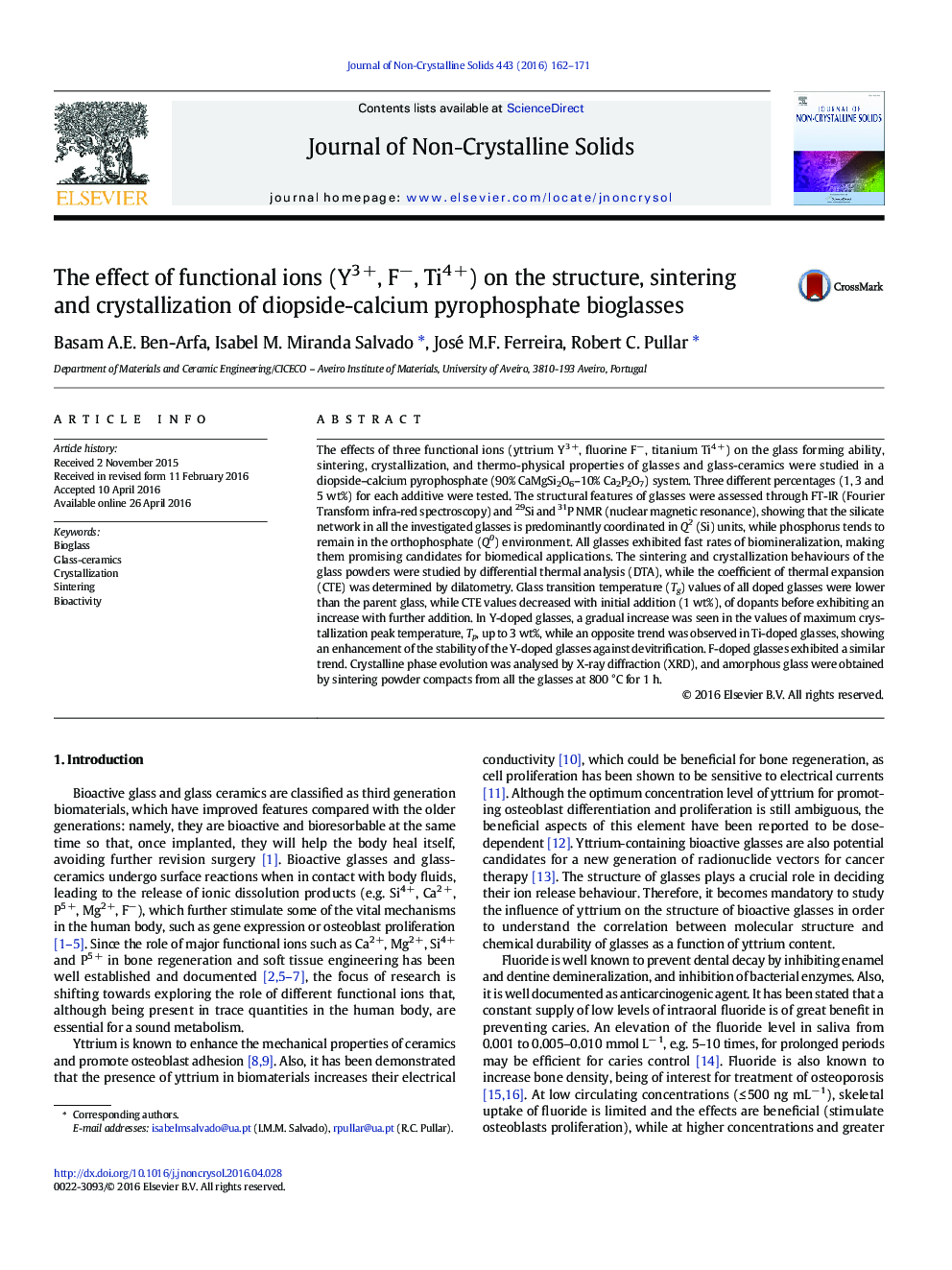| کد مقاله | کد نشریه | سال انتشار | مقاله انگلیسی | نسخه تمام متن |
|---|---|---|---|---|
| 1480232 | 1510402 | 2016 | 10 صفحه PDF | دانلود رایگان |

• 90% diopside (CaMgSi2O6) – 10% calcium pyrophosphate (Ca2P2O7) bioglass was studied.
• Investigated effect of doping with Y3 +, F− and Ti4 + on bioactivity and thermo-physical properties
• Q2 Si structural units dominate (high bioactivity), but slight depolymerization in doped glasses.
• Y- and F-doped glasses showed initial gradual enhancement of stability against devitrification.
• Ti-doped glasses exhibited fast biomineralization rates, forming HAp after 1 h in SBF solution.
The effects of three functional ions (yttrium Y3 +, fluorine F−, titanium Ti4 +) on the glass forming ability, sintering, crystallization, and thermo-physical properties of glasses and glass-ceramics were studied in a diopside–calcium pyrophosphate (90% CaMgSi2O6–10% Ca2P2O7) system. Three different percentages (1, 3 and 5 wt%) for each additive were tested. The structural features of glasses were assessed through FT-IR (Fourier Transform infra-red spectroscopy) and 29Si and 31P NMR (nuclear magnetic resonance), showing that the silicate network in all the investigated glasses is predominantly coordinated in Q2 (Si) units, while phosphorus tends to remain in the orthophosphate (Q0) environment. All glasses exhibited fast rates of biomineralization, making them promising candidates for biomedical applications. The sintering and crystallization behaviours of the glass powders were studied by differential thermal analysis (DTA), while the coefficient of thermal expansion (CTE) was determined by dilatometry. Glass transition temperature (Tg) values of all doped glasses were lower than the parent glass, while CTE values decreased with initial addition (1 wt%), of dopants before exhibiting an increase with further addition. In Y-doped glasses, a gradual increase was seen in the values of maximum crystallization peak temperature, Tp, up to 3 wt%, while an opposite trend was observed in Ti-doped glasses, showing an enhancement of the stability of the Y-doped glasses against devitrification. F-doped glasses exhibited a similar trend. Crystalline phase evolution was analysed by X-ray diffraction (XRD), and amorphous glass were obtained by sintering powder compacts from all the glasses at 800 °C for 1 h.
Journal: Journal of Non-Crystalline Solids - Volume 443, 1 July 2016, Pages 162–171